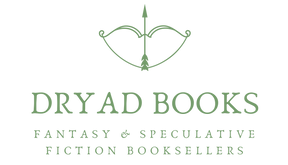Review: Emily Wilde's Encyclopaedia of Faeries by Heather Fawcett
- Toby
- Feb 1, 2023
- 2 min read

Synopsis 1909. Thirty-year-old Cambridge Professor Dr. Emily Wilde lives life with a single-minded purpose – she wishes to complete her encyclopaedia of Faerie Folk and does all she can to complete this goal, even if it means suffering the company of other people, the most irritating of whom is her colleague and rival Wendell Bambleby. When she arrives in the remote village of Hrafnsvik, she has no desire to mingle with its denizens. However, soon she realises that Hrafnsvik is full of Fae mysteries and to unlock them she needs the support of its residents. When the ever-charming Bambleby also turns up at the village, Emily knows she has to make some tough choices.
Review
I adore found fiction, something about the immediacy of being transported to a fantasy historical land through a primary source captures my imagination unlike anything else. It might be something to do with being a historian by training. The fundamental problem of epistolary novels, that most people do not record large swathes of dialogue in their writing, needs compelling narrative and logical leaps and I think Fawcett carried it off exceptionally well, delivering a huge treat.
Emily Wilde’s Encyclopaedia of Fairies takes the genre in an imaginative direction, with the main character taking the reader on a journey through the pages of her academic research, investigating a world of faeries who really inhabit her world. These stretch from the wondrous and terrifying courtly fae, through to cheeky brownies hiding by mountain streams. While the format has some difficulties in the latter half of the book, the general effect is utterly enchanting.
The blurb of the book describes it as the 'most whimsical and heart-warming tale you’ll read year', This underestimates the depth and sharp intelligence of a writer who has clearly drawn on a range of sources to construct her fantastical alternative history. The characterisation of different varieties of faeries which Wilde draws on myths and stories from all over Europe and they are integrated cleverly into the fantastical history through the marginalia throughout. Footnotes in particular form a convincing and charming addition to the work.
The humour and dynamics between the two characters offer avenues for all readers to enjoy with grumpy romance and academic rivalry entertaining and irritating in equal measure. On academic and personal grounds, I found the main male character to be insufferable. He's selfish, self-centred, and dishonest whereas the female main character is driven and ambitious. He does, however, add a great deal of light and humour to the book.
The book was, weakest in its scenes of romance, and it is also here where I think the format of the narrative begins to fall apart, with the immediacy of emotion being confused by some live 'thinking in ink'. However, other reviewers have commented on how much more of this they wanted! Where the dusty depth of the academic world gives way to heartfelt whimsy Fawcett broadens her appeal.
I cannot wait to read the next instalment of this adventure. It is the book I wish I had written!



.png)


Comments